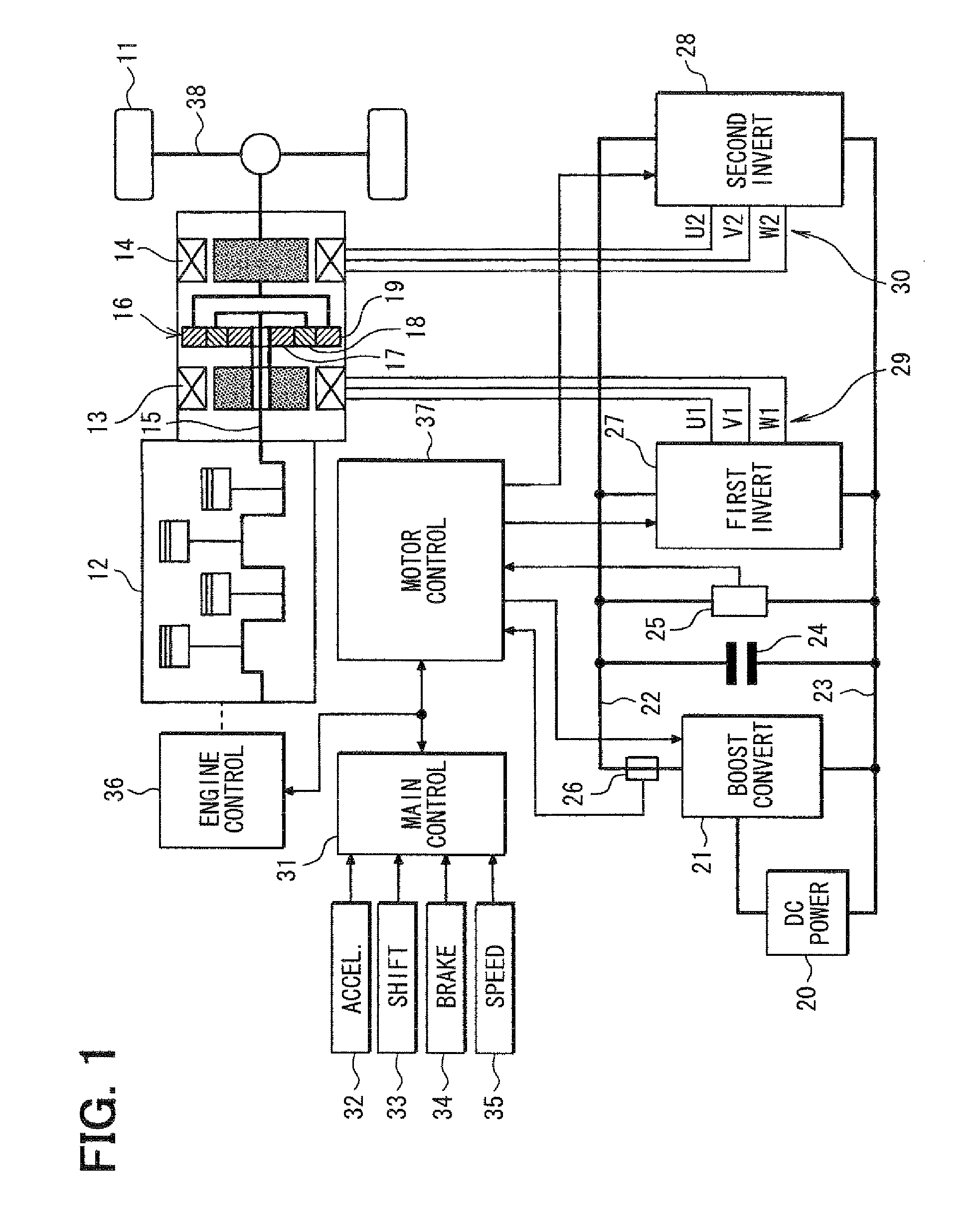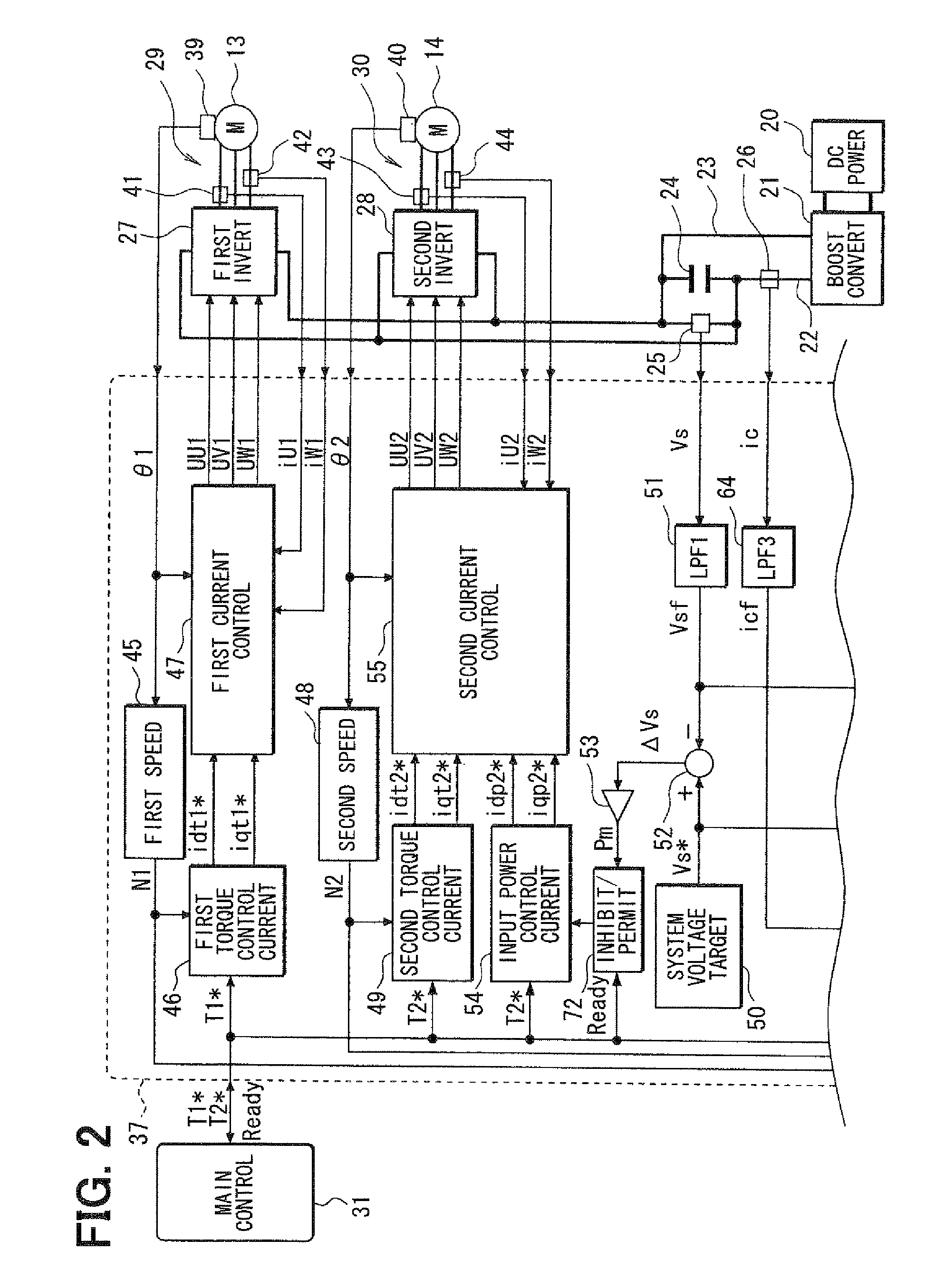Control apparatus for electric vehicles
a technology for controlling apparatus and electric vehicles, applied in the direction of dc-ac conversion without reversal, electric energy management, electric devices, etc., can solve the problems of voltage appearing on the power supply line becoming excessively high, voltage variations, etc., and achieves stable voltage appearance, low cost, and small size
- Summary
- Abstract
- Description
- Claims
- Application Information
AI Technical Summary
Benefits of technology
Problems solved by technology
Method used
Image
Examples
first embodiment
[0023]Referring first to FIG. 1, an electric vehicle 11 has an internal combustion engine 12 in addition to a first AC motor 13 and a second AC motor 14. Thus, the electric vehicle 11 is an engine / motor hybrid vehicle. The engine 12 and the second AC motor 14 are employed as a drive power source for driving the electric vehicle 11. Power generated by a crankshaft 15 of the engine 12 is divided into two paths by a planetary gear set 16. The planetary gear set 16 includes a sun gear 17, a planetary gear 18 and a ring gear 19. The sun gear 17 rotates at its radial center. The planetary gear 18 rotates along a circumference external to the sun gear 17 while revolving around its radial center. The ring gear 19 rotates along a circumference external to the planetary gear 18. The planetary gear 18 is linked to the crankshaft 15 of the engine 12 through a carrier not shown in the figure. On the other hand, the ring gear 19 is linked to a rotation shaft of the second AC motor 14. The sun gea...
second embodiment
[0090]According to a second embodiment, as shown in FIG. 10, a torque difference reduction control unit 93 is provided in place of the torque difference reduction control unit 86 in the first embodiment (FIG. 5). Further, as shown in FIG. 11, the control unit 93 has a second torque estimation unit 94 in place of the second torque estimation unit 88 in the first embodiment (FIG. 8).
[0091]Specifically, the control unit 93 calculates a second estimated torque Tt, which is an estimated torque generated by the second AC motor 14, based on the detection current vector it2 (d-axis detection current idt2, q-axis detection current iqt2) for torque control. The control unit 93 then executes a torque difference reduction control to reduce a torque difference ΔT between the first estimated torque T and the second estimated torque Tt to nearly zero.
[0092]More specifically, the first torque estimation unit 87 estimates the first estimated torque T as follows by using the detected motor current ve...
PUM
 Login to View More
Login to View More Abstract
Description
Claims
Application Information
 Login to View More
Login to View More - R&D
- Intellectual Property
- Life Sciences
- Materials
- Tech Scout
- Unparalleled Data Quality
- Higher Quality Content
- 60% Fewer Hallucinations
Browse by: Latest US Patents, China's latest patents, Technical Efficacy Thesaurus, Application Domain, Technology Topic, Popular Technical Reports.
© 2025 PatSnap. All rights reserved.Legal|Privacy policy|Modern Slavery Act Transparency Statement|Sitemap|About US| Contact US: help@patsnap.com



